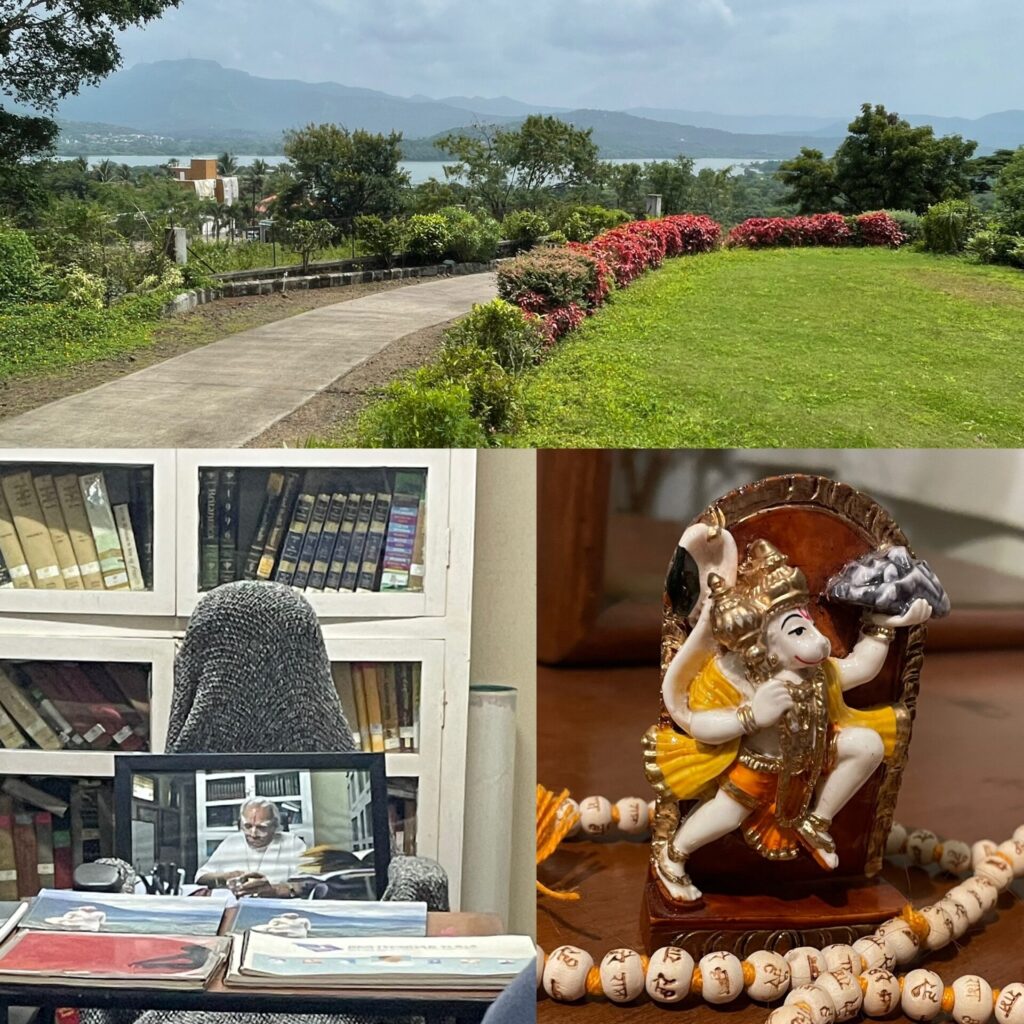Wisdom-Process

Prashant class today was a reminder of our need for self-reliance in our practice of yoga. We are so used to getting spoon fed instructions in class that we forget that the depth of yoga is in our own time and in our own practice.
“Yoga must be IN-STRUCK, not just instructed”
We have to find ways and means to investigate and strike the curiosity of yoga from within! Each asana and our approach to it can be “prismatic” in effect – from many angles and directions. The body, the mind, and the breath all have their roles in the wisdom-process of yoga. There is the knower, the knowing, the known, and the knowledge – the doer, the doing, and the done along with the receiver, the act of receiving, and the received. Every role is to be investigated to gain wisdom of our multifaceted Self.
To start, we were in a simple pose which Prashant referred to as Akunchasana, lying on our back with the knees bent and feet on the floor, in motion tick-tocking the knees side to side. At first it was “just do”. Then he asked us to observe the same action by the body, by the breath, and by the mind. His point was to observe the baseline habit – some will be fast in motion and some will be slow by nature. Then, how the speed or anchor or sensitivity changes with a change in addressal of the body, of the mind, or of the breath. Changing the speed changes the reception of the position, and also the addressal can change the speed. Can we find out what is what and how this happens?
We then moved on to comparison of static posture versus movement. Reminders were that any “static” pose is not truly static, and though we may be in movement, there must be an anchor somewhere. He made us think of the thick mat we use for sitting postures. It looks static – seems like it will only move if applied with force. However, the atoms and particles in that mat are in constant motion. So, think of how much change and transformation is ongoing within our ever-active embodiment! Can we be sensitive enough to perceive it?
Finishing through some chair twistings and inversions, we utilized profound exhalations and observed their effects – the breath as doer, the doing, or the done.
As always, Prashant can leave us sometimes “dumbstruck”, even as we look to go within and be “in-struck”. But, as one student who slept in and missed class observed jealously, we all came out of class smiling!
After class I visited with an old friend whom Chris also knows, driving out to her “lake house” in the hills surrounding Pune. Numerous people have reminded me this trip that Pune used to be a hill station, one of many places that the British went for retreat. It is higher up in elevation, but because of the now sprawling city, it is easy to forget the nearby valleys are lush green complete with waterfalls. The good news is, it is only a short drive to experience the remnants of this idea of “retreat” – fresher air, cooler at times, and delightfully more green and quiet!
We have been getting surprise emails announcing activities in the afternoon at RIMYI “for the visitors”. Today we had a nice tour of the institute in total. Of course I have been in all the spaces before, but it was fun to have a guide so enthusiastic in telling the stories and history. It was my first time back down into the library this trip. It is still a bit emotional to see Guruji’s chair and desk kept where he worked tirelessly on his writings and correspondence. And, it was the first time in a very long time I have been up on the roof topped with an idol of Hanuman, the monkey god, and the one I am most drawn to for many reasons.
RIMYI is truly amazing! Its energy, symbolism, and history lies in the placement of every brick, the evolution of every prop, and the presence of every idol and decoration. As we know, Guruji did not do anything thoughtless, and the entirety of the institute is no different.
Our connection to this lineage and history cannot be under appreciated or ignored.